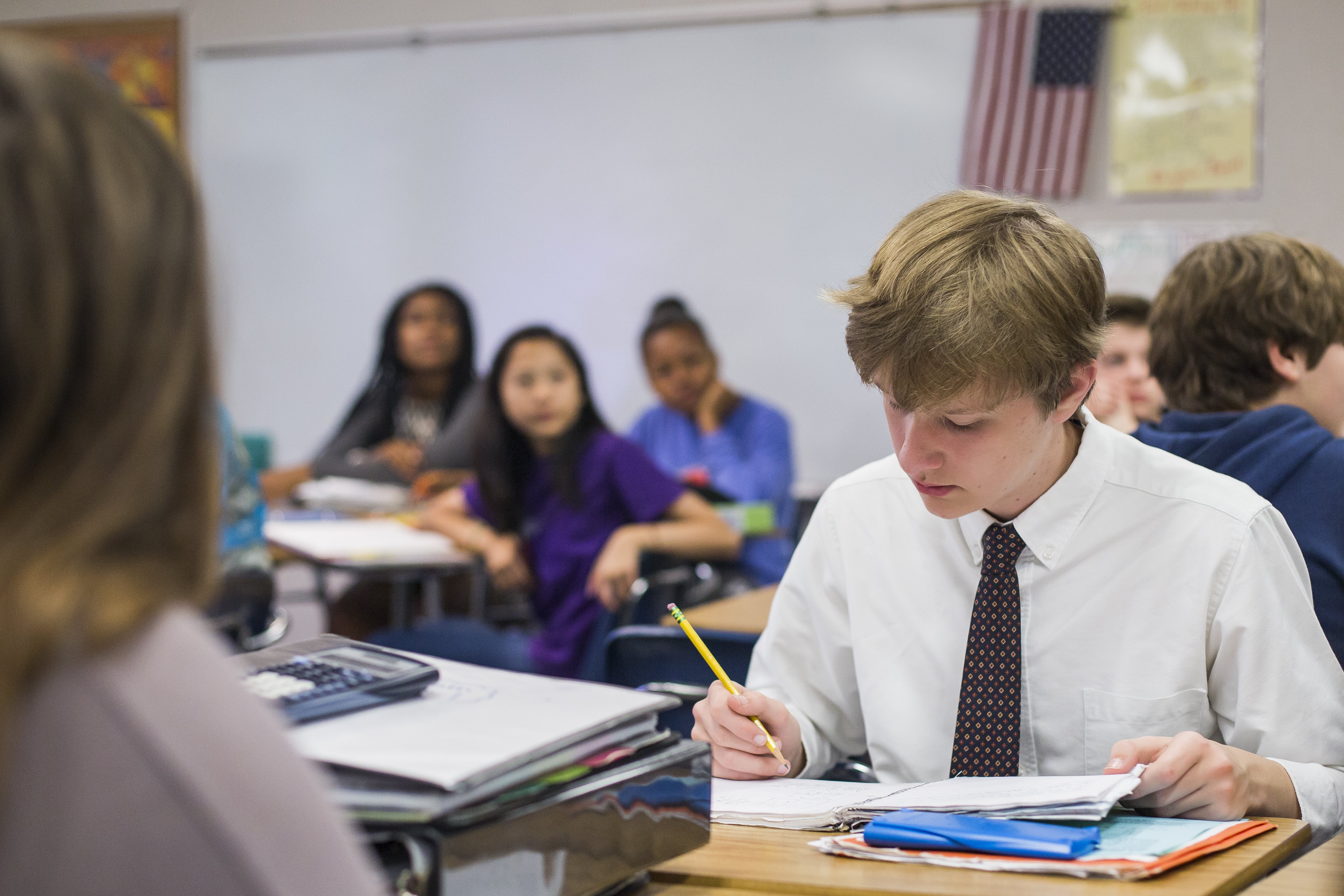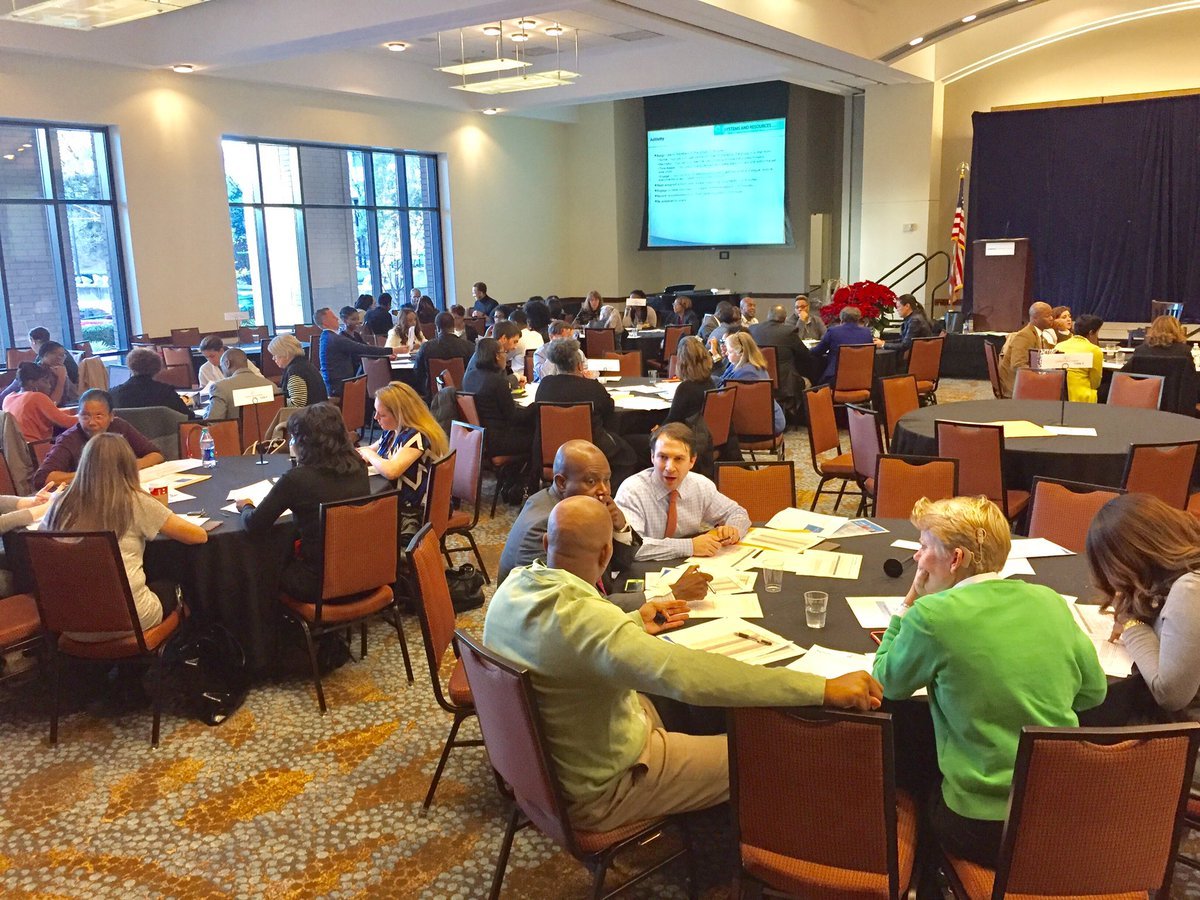Aligning Every Penny Toward APS Journey of Transformation
As the Atlanta Board of Education prepares to consider a tentative 2018 General Fund Budget at its May 1 meeting, we have a responsibility to show our stakeholders where their tax dollars are going and how we are striving to push more of those dollars directly to the classrooms where education happens!

Last week, I wrote about the year-long process APS employs to develop its operating budget with a focus on quality and attention on efficiency all without needing a tax millage increase! I also provided a brief overview of the 2018 General Fund Budget, which currently stands at about $777 million, $15 million more than the current budget. The Board plans to vote on a final budget at its June 5 meeting.
With this blog post, I want to dig deeper into the operating budget to give you a greater sense of where our dollars go and how we strive to adhere to the very first tenet of our core values: Put Students and Schools First!
(A note: The General Fund Budget represents just a portion of the nearly $1 billion of resources APS manages. The district also maintains budgets for Special Revenue, comprised mostly of federal sources such as Title I and Title II; Capital Outlay, funded primarily from SPLOST allocations; and Debt Service.)
The General Fund Budget generally comes from local and state taxes and other sources, such as facility rental fees, selling of assets and other payments to the district. For the tentative FY2018 budget:
- $544.9 million (70%) comes from the local tax digest
- $197.5 million (25%) comes from the state
- $34.4 million (5%) comes from other sources
With this budget, we have been hard at work to drive more and more of those dollars to our schools. As I have stated before, we have also found ways to slim down our costs, including about $8 million in cuts from our Central Office budgets.
 Because of that we have been able to create more investments. This includes:
Because of that we have been able to create more investments. This includes:
- $35.8 million in our long-term, over-arching Turnaround Strategy to improve our lowest-performing schools. This includes supplemental and critical support and partnerships with educational organizations with expertise in turnaround strategies
- $10.8 million for school-based flexible spending dollars that allows our principals to address the unique needs of their schools. Principals will have even more flexibility and autonomy as APS participates in a pilot program called Fund 150 that allows them to combine federal Title I dollars with their general fund school allotment
- $10.5 million (a $3.5 million increase over this year’s budget) for signature programming such as STEM, International Baccalaureate and College and Career Prep
- $6.2 million for whole-child development programs and initiatives like athletics, arts and social emotional learning
- $580,000 for our new Family Engagement Strategy
After this rigorous budget development process, we are also prepared to allocate $6 million for a salary increase of 1.5% for nearly all employees in this proposed FY18 budget.
Specifically for teachers, it should be noted that the state has funded a 2% increase to the state teacher salary schedule effective for the 2017-2018 school year. The increased dollars on the state teacher salary schedule have been added to increase the APS teacher salary schedule for 2017-2018. Because the APS teacher salary schedule is significantly higher than the state salary schedule, the dollars generated from the state’s 2% contribution – coupled with our local investment – will result in a minimum increase of 1.5% for APS teachers.
The 2018-17 salary schedules will be published on the HR Compensation site after the Board’s final approval. I want to thank all of our colleagues, especially members of our Teacher Advisory Council, who worked multiple times with us in the fall to scrub this budget and to land on these recommendations.
In the meantime, the district continues to have budget constraints that challenge us to balance several competing priorities. These constraints include mandatory costs related to unfunded pension and healthcare, the continued investment in our charter schools that have been approved to add grades, an aggressive turnaround strategy, funding our new operating model with fidelity, and right sizing our central office for increased savings, efficiency, and redirection to programs and schools.
Therefore, as part of the ongoing effort to right size the district with the appropriate number of schools to serve 52,000 students, the budget reflects a series of downsizing measures that further enable APS to consolidate some schools, remove more layers from the central office to allow for more school-based solutions and approaches, and transition some of the schools to our turnaround partners.

APS employees engaging in a staff budget work session last fall
On Monday, the Board will also consider a staff reduction plan that would remove 487 positions (438 school-based, 49 in central Office) and create another 152 positions (128 school-based, 24 in central office) to better meet the needs of our students. Given attrition in our district, APS typically rehires about 50 percent of our teachers.
These reductions fall within three primary categories:
- Reductions related to the downsizing of central office to ensure that we maximizing the resources provided directly to schools
- Reductions related to our continued right sizing of infrastructure and school-based staffing allocations
- Reductions related to the phased transition of schools to turnaround partners as part of our larger turnaround strategy
Downsizing of Central Office
Over the past three years, we have been working diligently to push additional resources out to our schools, which has been made possible largely because of reductions to our central office budget. The FY 2018 budget calls for additional cuts to the central office budget, many of which fall within our Schools & Academics Team. These changes, however, are in alignment with our district strategy, and I am confident will ultimately position our schools for greater success.
For example, as part of the budget, we will:
- Reallocate resources from the Title I Family Academic Engagement Specialist position to push more resources out to schools to begin implementing their school-based vision for family engagement in alignment with our new Family & Alumni Engagement Strategy.
- Phase out the role of Core Content Specialists while extending support for content coordinators to ensure we have sufficient capacity to continue to refine the units of study and to build the capacity of our school leadership teams to own the implementation.
- More strongly align our Social Emotional Learning strategy with the rest of our teaching and learning work by phasing out the current SEL Coach position and creating three new SEL coordinator positions within teaching and learning.
- Push more responsibilities to our Title I office, including Title II, to ensure that we maximize these shrinking federal dollars and minimize the central office costs associated with administering our federal programs.
These actions are intended to remove layers at the Central Office to allow for more school-based solutions and approaches, the goal being to further empower schools to make more decisions to meet the unique needs of their teachers and students.
Right Sizing Infrastructure and School-Based Staffing Allocations
As I have shared many times before, our school system was built for close to 100,000 students – an enrollment we have not seen since the 1970s. With about 52,000 students now, we cannot sustain such an infrastructure, which is why we have been forced to right size our school infrastructure and school-based allocations in order to become a more efficient, and therefore more effective, school system for our students.
Employees impacted by these consolidations and other school changes come from Adamsville Primary, B.E.S.T. Academy, Coretta Scott King Young Women’s Leadership Academy, Crim High, Harper-Archer Middle School, Miles Intermediate, West End Academy and Whitefoord Elementary School. Fortunately, many of our employees at these schools have already identified opportunities within our district including some of the newly created schools and, therefore, have been rehired in other positions.
Based upon feedback from principals, we are also eliminating the SST Intervention Specialist position that has historically been provided to schools from central office; however, many principals have chosen to use their school-based flexible dollars to retain these positions in their budgets.
Turnaround Partner Schools
The phase-in of our district turnaround strategy also impacted APS employees. Just as Thomasville Heights Elementary transitioned to Purpose Built Schools this school year, Slater Elementary and Price Middle will transition to Purpose Built and Gideons Elementary to Kindezi next school year. While many of our employees will remain in their schools, they will do so as employees of the partner organization. Others, have chosen to transition to other schools within the district.
As we have always done, the district will support all affected employees with interview priority status as we aggressively work to find them other opportunities within APS.
As a result of this strategic and balanced FY 2018 budget, Atlanta Public Schools moves even closer to a more efficient, quality-driven school district. Again, I must thank Jason Esteves (At-Large, Seat 9 Board Member and Budget Commission Chair), the Board and our finance team for the great work so far.
Looking Ahead
Monday’s meeting won’t mean the conclusion of the process.
As I wrote in the previous blog, we have been holding regional public meetings. The remaining meetings are from:
- 6 to 7 p.m., Tuesday, May 2, at Burgess-Peterson Academy
- 6 to 7 p.m., Thursday, May 11, at Long Middle School
- 6 to 7 p.m., Thursday, May 18, at the main Sutton Middle School campus
The first official public hearing will be held at noon, Monday, May 22, at the Center for Learning and Leadership following a Budget Commission meeting. A final public hearing will be held on Monday, June 5, before the budget is put before the board during its regular meeting.
And if local collections exceed our expectations, the Board and I will consider the unfunded components of transformation, which include reading/literacy, whole child development, an APS talent development program and a district early learning program.
Changes are never easy, and we did not make these decisions without a great deal of deliberation and engagement from our teachers, our staff, our students and families and other stakeholders. Please continue to be involved, and give us your thoughts on the work so far!
Blog Signup